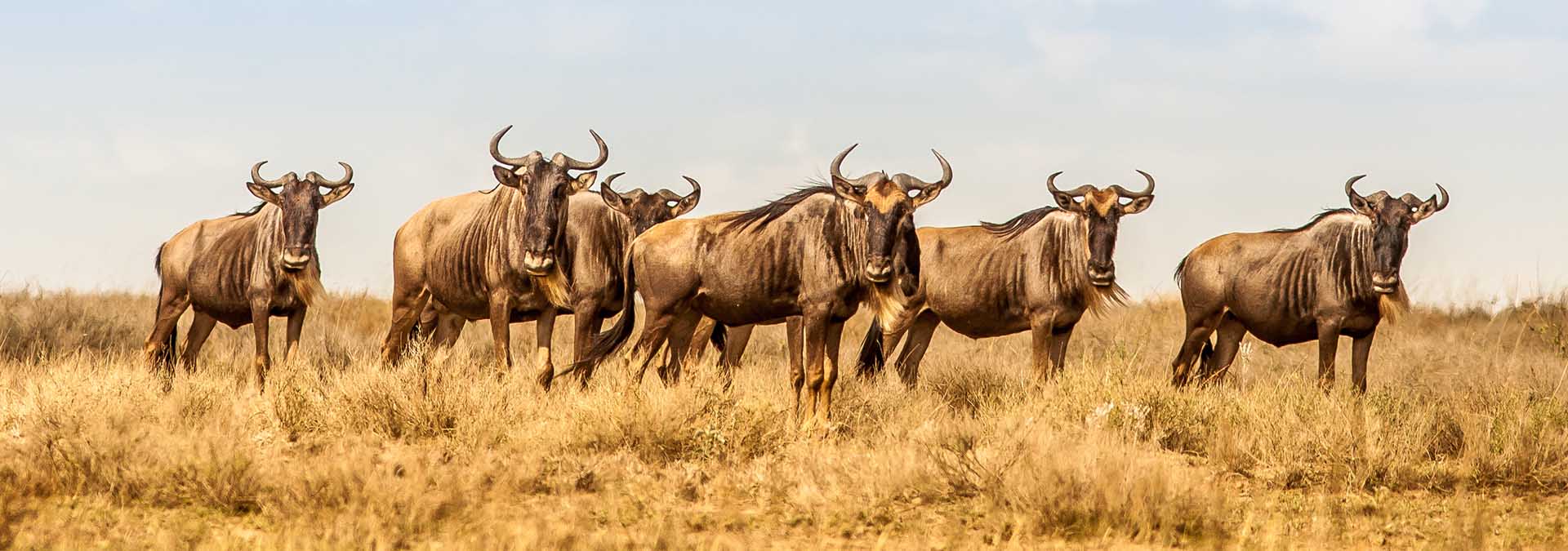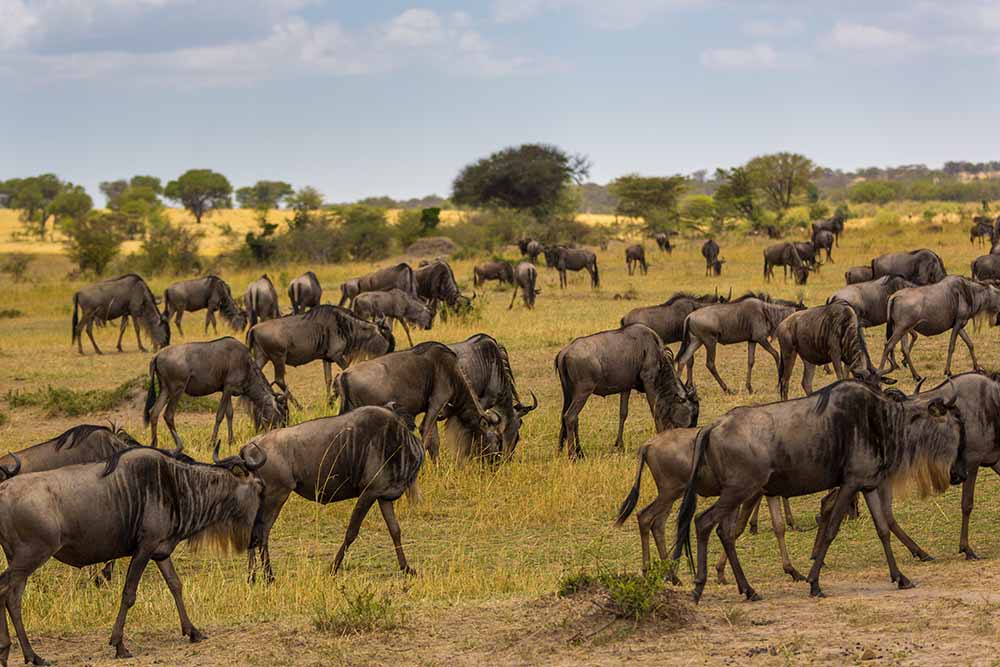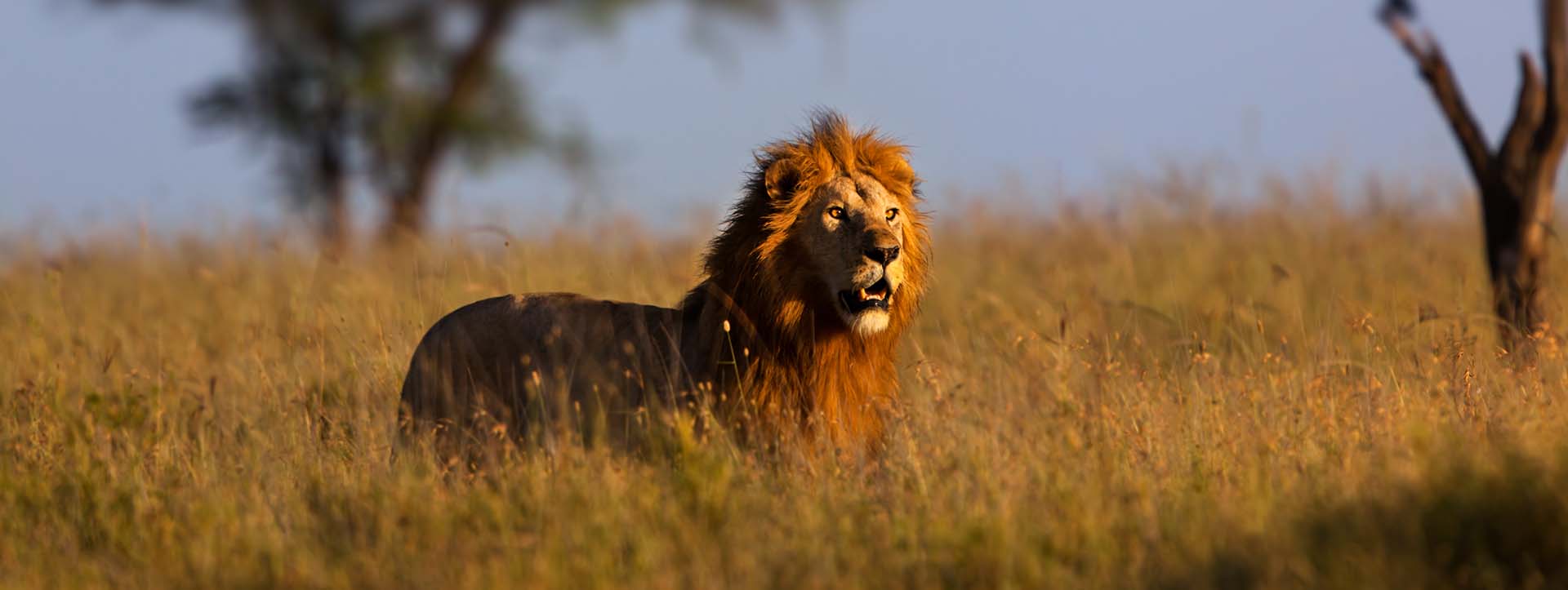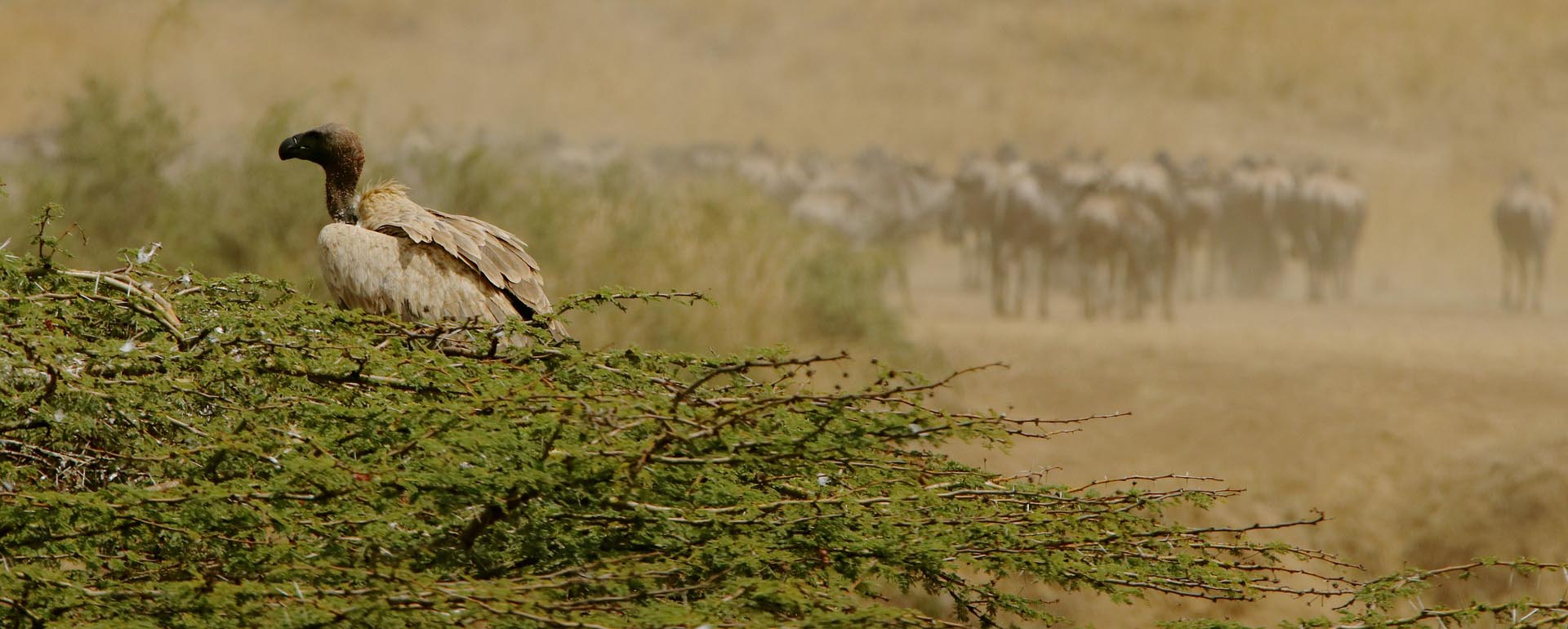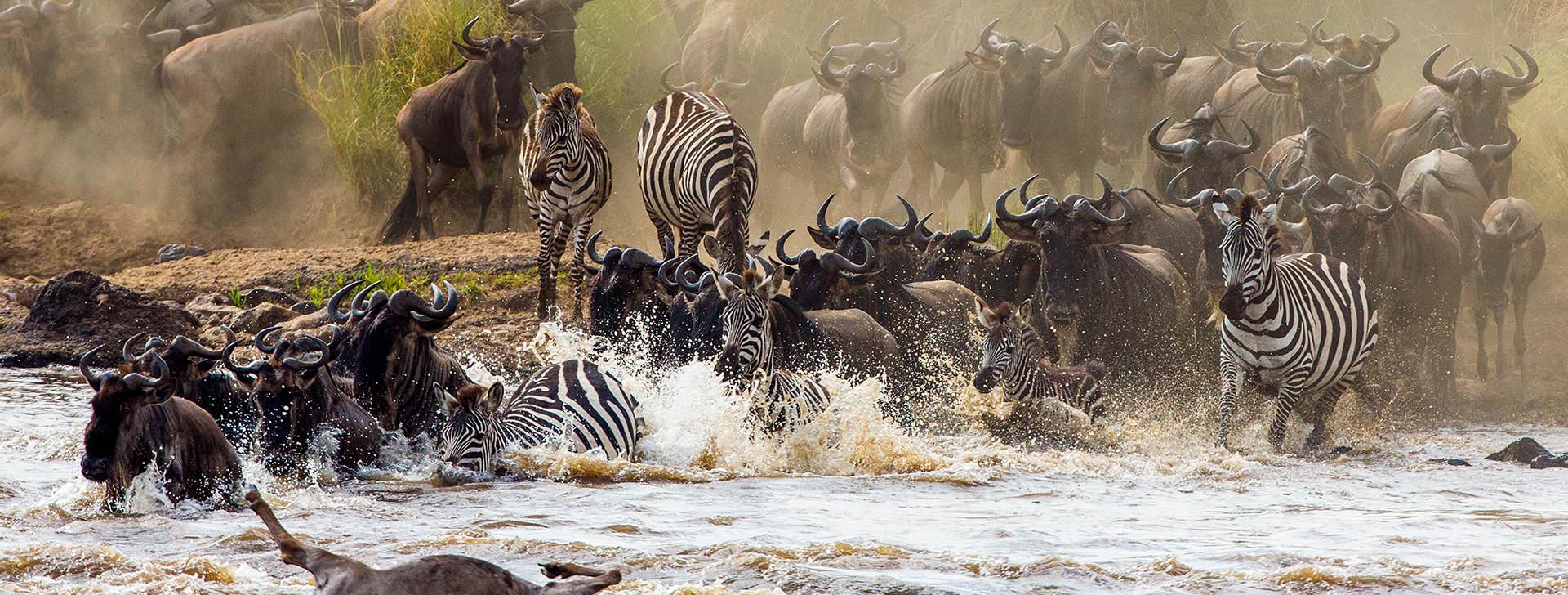Ecology of Ngorongoro
Ngorongoro Conservation Area Authority encompass a great variety of ecosystems including montane forest, swampy, marshy, dry forest, as well as long and short grasslands as part of the extension of the Maasai Mara and Serengeti ecosystems.
This diverse ecosystem attracts a large number of different wildlife species to reside within the conservation area within close proximity. This variation also allows for a succession of feeding by herbivores as the seasons change.
Wetlands serve as the next preferred feeding location for the resident and migrant grazers on dry seasons. Wild herbivores, conversely, graze grasses of certain heights depending on their specie.
Buffalo (Syncerus caffer) and elephant (Loxodonta Africana) feed upon rough grass and sedges; zebras (Equus burchelli) prefer the higher “softer” grasses; wildebeest (Connochaetes taurinus) graze the next level of grass that is more “tender” and of medium height; lastly, the gazelles (Gazella spp.) feed upon the lower level of grasses with the tender leaves.
Vegetation within the conservation area is highly dependent upon locations in respect to variations in water inundation, salinity, and pH levels. The dominant ecosystem within the crater is the tall and short grasslands. The dominance of short or tall grasslands depends on the underlying soil structure, including the porosity and the extent of compaction.
The most palatable, short grass species found inside the conservation area are Sporobolus, Digitaria, and Cynodon. Other common species of short grass are Cutleaf Medic (Medicago laciniata), rhodes grass (Chloris gayana) and Aster hyssopifolius.
Short grass environment is highly significant as a breeding ground for zebra, wildebeest, and gazelle during the wet growing season. These grasses die back quickly as the dry season progress. The long grass environment emerges with distance from Lake Makat due to better drainage and possibly less trampling by herbivores.
Long grass species in these areas include red oat grass (Themeda triandra), golden tipped Chloris, Hyparrhenia, Aristida and and tufted Pennisetum.
The Gorigor and Mandusi swamps are dominated by the water-loving sedges Cyperus papyrus and Cyperus immensus, as well as low-veld reed (Phragmites mauritianus). Other species found here include smooth flats edge (Cyperus laevigatus), rice cutgrass (Leersia hexandra), creeping panicum (Panicum repens), and brown beetle grass (Diplachne fusca).
The swamps in Ngorongoro do not support woody vegetation due to thin soils and dominated by longer grass species. Around the swamps grow grasslands that consist of tall, coarse grasses due to the wet saline-alkali soil association.
The edges of the swamps are extremely valuable for grazing during dry seasons when the more preferred grasslands have dried out. Species in these locations include Rhodes grass (Chloris gayana), star grass (Cynodon plectostachyus), Bermuda grass (Cynodon dactylon), and spilanthes mauritiana. It is especially within this grass association that the grazing succession of buffalo, zebra, wildebeest, and gazelle can be observed.
The crater highlands are composed of tree associations with regions of grasslands akin to those of the Crater floor. Common tree species include Acacia lahai, Croton spp, Cassipourea malosana, Albizia gummifera, and Nuxia congesta. While the highlands can be considered a rain forest, it is termed “montane” because of its “higher altitude and more variable temperature and rainfall.”
There is also a great variety of shrubs and flowering plants that grow in these forests. In some places the invasive Eleusine jaegeri can be found to dominate.
As a result, areas that have been overgrazed and consequently subject to erosion exhibit this species in abundance. Eleusine jaegeri is a sharp-edged grass that is highly unpalatable to wildlife and livestock alike. This species damages the teeth of cattle and wildlife.
Maasai livestock do not share pastures with the wildebeest during the wet season, which is as well the wildebeest calving season, due to the transmission of Malignant Catarrhal Fever (MCF) which is highly prevalent in gnu calves. Zebra populations, on the other hand, have remained relatively stable due to their ability to tolerate low-quality forage, allowing them to remain in grazing areas for long.
Herbivores in the Conservation Area compete for grazing space and water resources with the Maasai and their livestock.



